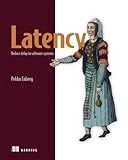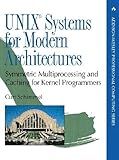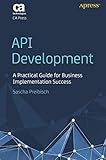Best Caching Solutions to Buy in December 2025

Latency: Reduce delay in software systems



Unix Systems for Modern Architectures: Symmetric Multiprocessing and Caching for Kernel Programmers



API Development: A Practical Guide for Business Implementation Success



PHP Oracle Web Development: Data processing, Security, Caching, XML, Web Services, and Ajax
- AFFORDABLE PRICING ON QUALITY PRE-OWNED BOOKS.
- ECO-FRIENDLY CHOICE: REDUCE WASTE BY REUSING BOOKS.
- CAREFULLY INSPECTED FOR QUALITY TO ENSURE CUSTOMER SATISFACTION.



Network Function Virtualization



Java EE 8 High Performance: Master techniques such as memory optimization, caching, concurrency, and multithreading to achieve maximum performance from your enterprise applications.



Redis in Practice The Ultimate Guide: Mastering Caching Queuing and Real-Time Processing for Lightning-Fast Apps with NoSQL (Japanese Edition)


Memcache stores data in key-value pairs. When a piece of data is stored in memcache, it is given a unique key that is used to retrieve the data later. The data is stored in the server's memory, which allows for faster access times compared to traditional storage methods like disk-based databases.
When a client wants to store data in memcache, it sends a request to the memcache server with the key-value pair. The server then stores the data in its memory and associates it with the specified key. When the client wants to retrieve the data, it sends a request to the server with the key, and the server returns the corresponding value.
Memcache uses a hashing algorithm to determine which server to store the data on, which allows for efficient distribution of data across multiple servers in a distributed memcache setup. Additionally, memcache employs a least recently used (LRU) eviction policy to determine which data should be removed from the cache when it reaches its memory limit.
In summary, memcache stores data in memory using key-value pairs, which can be quickly retrieved by clients when needed.
What is the difference between memcache and Memcached?
Memcache and Memcached are both used for caching data in memory to improve performance of applications, but they are not the same.
Memcache is a simple, in-memory key-value store that is often used to cache data in web applications. It is a protocol that defines the communication between client and server, and it is commonly used with programming languages like PHP and Python.
Memcached, on the other hand, is a high-performance, distributed memory object caching system. It is a separate software package that extends the capabilities of Memcache by allowing for distributed caching across multiple servers. Memcached is often used in large-scale applications to improve scalability and reliability.
In summary, Memcache is a simple key-value store and protocol, while Memcached is a more advanced distributed caching system that builds on the capabilities of Memcache.
How does memcache handle cache misses?
When a cache miss occurs in Memcache, the system will not be able to retrieve the data from the cache and will need to access the actual data source or database to retrieve the requested information. This will result in a longer response time compared to accessing the data from the cache.
After retrieving the data from the data source, Memcache will store the data in the cache for future access. This helps to minimize the chances of cache misses occurring again for the same data. Additionally, Memcache also implements caching strategies such as eviction policies to determine which data should be removed from the cache when it reaches its capacity limit.
What is memcache?
Memcache is a distributed memory caching system used to speed up dynamic database-driven websites by caching data and objects in memory to reduce the number of times database requests need to be made. It is commonly used to store data that is frequently accessed, such as database queries, API responses, or HTML fragments, in memory for faster retrieval. Memcache can help improve the performance and scalability of web applications by reducing the load on the database and speeding up page load times.
How does memcache handle data consistency?
Memcache does not handle data consistency on its own. It is a distributed caching system that is designed for high performance and scalability, but it does not provide features for ensuring data consistency across multiple servers or clients.
Developers are responsible for implementing their own data consistency mechanisms when using Memcache, such as using a write-through or write-behind caching strategy, or by using a separate data store that ensures data consistency, such as a database.
It is important for developers to be aware of the limitations of Memcache in terms of data consistency and design their applications accordingly to handle any potential inconsistencies that may arise.
